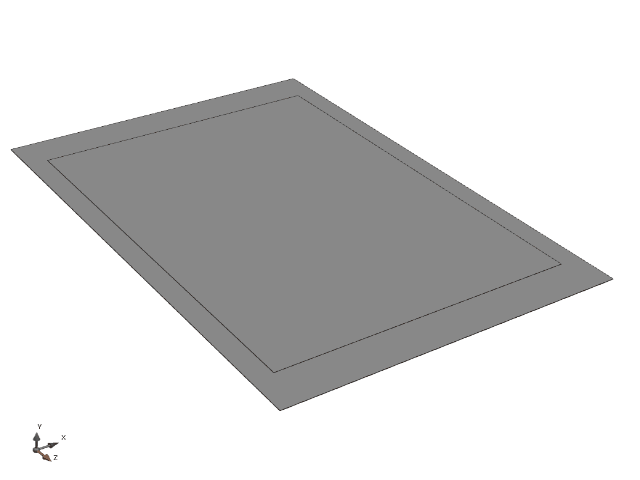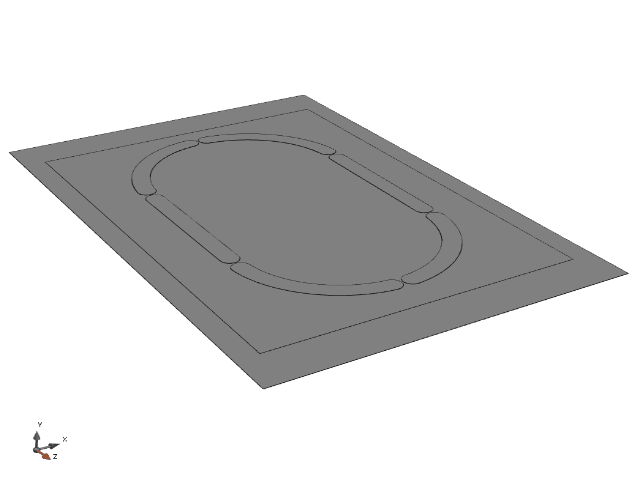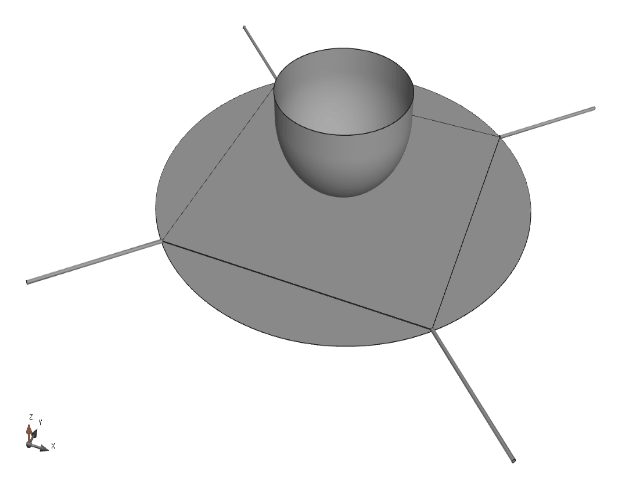Blank holders & tensioners
Influence defect appearance.
The process optimisation could involve, for example, the evaluation of tooling that facilitates the forming. Figure 1 shows the forming of a double dome benchmark geometry. Forming this geometry with a quasi-isotropically stacked laminate is sensitive to the appearance of wrinkling.

Figure 1: Animation of the forming of a double dome benchmark geometry, without the facilitation of blank holders and tensioners.
As often used in metal industry, blank holders can prevent the appearance of wrinkling. The blank holders usually subject the blank locally to a normal pressure. This introduces membrane tensions in the blank, preventing it from buckling out-of-plane. Blank holders can also be used to affect the intra-ply shear distribution and the drawn-in behaviour of the blank. Six segmented blank holders are used in figure 2, resulting in a robust forming process.

Figure 2: Animation of the forming of a double dome benchmark geometry, facilitated by the use of blank holders.
Tensioners or springs can also be applied to introduce membrane tensions in the blank. Figure 3 shows an example of a punch simulation, where the wrinkling of the blank is affected by applying the springs (solid bars attached to the corners of the blank). Please note that springs can be easily modelled in the .afi input file manually. Yet, these cannot be modelled in the AniForm PrePost itself. This option will be available in a future release.

Figure 3: Animation of the forming of a dome with a quasi-isotropic laminate, facilitated by applying tensioners to the corners of laminate.






